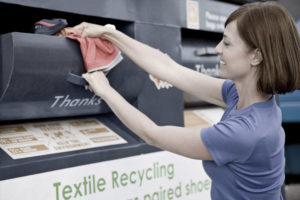
Within theme 4, how to increase textile fiber recycling, the team at IIIEE and IVL has done a thorough work in assessing policy options that enable a progression towards more textiles are collected, sorted and recycled. One of these is the policy based on EPR, Extended Producer Responsibility. In a recent Mistra Future Fashion report a thorough description of an EPR system is presented, followed by its assessment.
The report aims to present a concrete image of an EPR for the textile and fashion industry, tailored for the Swedish society. Today many stakeholders have mixed attitudes towards EPR and express that it very much depends on the design of the scheme, that it should take into account interests of all stakeholders, and its focus should not only on down-streams of the life-cycle, i.e. waste management, but also on up-streams in the life-cycle to address the issues earlier in the process. However, getting the full picture is not an easy task and lots of parameters, such as financing mechanisms, convenience of consumers, characteristics of the products and market, and interests of stakeholders, need to be taken into account. The outlined EPR scheme aims to help stakeholders to get a deeper understanding of its potential content and impact.
The researchers engaged in the assessment are Naoko Tojo at IIIEE and Maria Elander at IVL. To learn more about the outlined assessed EPR scheme, see this link, or contact Naoko Tojo directly.



